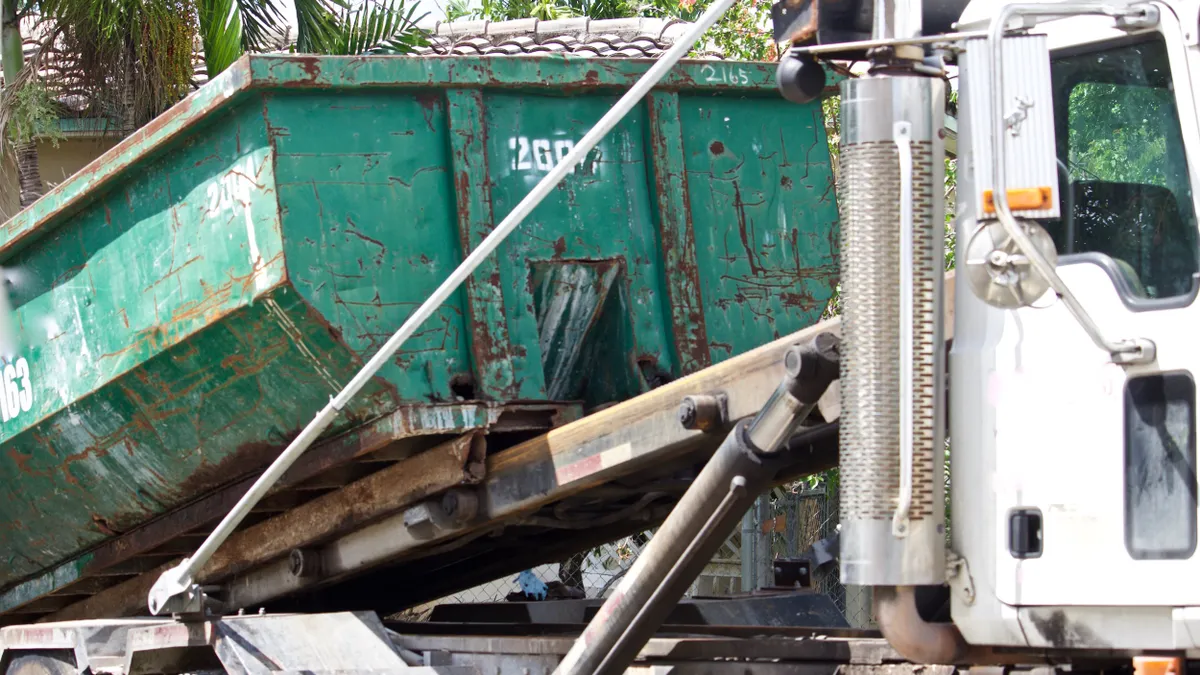Dive Brief:
- As major brands continue to pledge to reduce plastic packaging, bio-based packaging companies have positioned themselves as alternatives to recycled plastic products by offering options made with seaweed and mushrooms.
- During an Aug. 25 webinar hosted by the Plastic Pollution Coalition, representatives from Ecovative, Loliware and Sway discussed how such packaging can help companies meet plastic reduction targets and fit into existing supply chains.
- Yet the products are still gaining momentum in mainstream packaging markets as they work to scale up their innovations and convince brands that their products perform to the same standards as plastic, speakers said.
Dive Insight:
Bio-based packaging isn’t new, but companies in the sphere today are making the case that packaging made from natural components is a circular economy-oriented solution to climate change that reduces reliance on fossil fuels while offering products as durable as their plastic counterparts.
Ecovative makes packaging made with a mixture of mycelium – the root structure of mushrooms – and a hemp byproduct. The result is a lightweight material similar to expanded polystyrene foam, said Meghan Olson, the company’s director of mushroom packaging.
Ecovative works with companies that need protective packaging for products ranging from small, flask-size containers to “1,000-pound industrial servers” and has previously worked with large companies like IKEA, which is exploring numerous types of eco-packaging in its effort to eliminate plastic packaging by 2028.
Ecovative started back in 2007, but today, consumers are more familiar than ever with packaging alternatives and are demanding companies make changes, she said.
Sway, which makes seaweed-based replacements for garment bags, plastic shopping bags and other packaging for the fashion industry, creates items that look very similar to plastic bags currently on the market. Julia Marsh, Sway’s co-founder and CEO, said creators of bio-based packaging need to “be thoughtful about labeling” to distinguish them from both their plastic counterparts and what she calls “partial fixes” such as packaging that may include bio-based ingredients but still also contain plastic.
Good labeling helps consumers keep packaging out of landfills at the end of life while also giving major companies the opportunity to show customers they care about the environment, she said. “The question is, are major polluters looking for solutions? Yes, but they don’t always want to pay more or do any education with customers,” she said.
Price remains a hurdle – such products are still more expensive than plastic-based counterparts – as well as the ability to scale quickly to the demands of major companies looking to quickly replace years of using plastic in supply chains. Yet mushroom and seaweed packaging makers say an even bigger challenge is convincing business partners that their wares aren’t a wacky idea, but a reliable option backed by research and science.
“We’re not a novelty but a sustainable solution, a long-term solution,” said Victoria Piunova, chief technology officer at Loliware, which makes seaweed-based straws. The company has researched how to match a traditional straw’s tensile strength, stability and ability to withstand moisture without “turning into mush,” she said.
Their main selling point is that many of their products can be made using existing plastic production equipment, with seaweed-based pellets behaving the same way as plastic through the melting and injection molding process, she said. “Being able to use existing infrastructure is a game changer because just think of all the innovation and all the work that went into developing plastic infrastructure all these years.”
Even if some of these products can be manufactured in similar ways to petroleum-based plastic, mushroom and seaweed-based products aren’t meant to be recycled at end of life. Instead, they are all meant to biodegrade in home compost systems or other composting infrastructure over several months.
Speakers said their companies also take care to minimize their production impact on the environment. Both Piunova and Marsh say their seaweed-derived packaging mainly comes from farmed seaweed to reduce impact on naturally grown types along North American coastlines, though the abundance of seaweed across the globe represents a major opportunity to scale up products if it’s responsibly sourced, they said. Marsh estimates there are about 7 million square kilometers of seaweed growing along the planet’s coastlines.
Ecovative does not farm its mushrooms; it relies on continually propagating mycelium to grow its feedstock. Hemp additives come from agricultural waste and are not farmed specifically for the product, Olson said.















